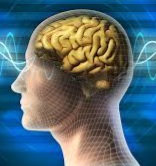Why a person is unable to forget scary and old memories for years, they become home in this part of the brain…
There are many such memories in life which we want to forget, but are unable to forget even after trying, whether it is a scary accident with you or your breakup. Not only this, many times people go into depression due to these memories. It also affects people's mental and physical health. In such a situation, the question arises that why are we not able to erase these memories from our minds? In this report we will know what study the scientists have done on this? We will also know in which part of the brain these memories reside.
A part of our brain called 'Amygdala' controls the emotions related to memories. The hippocampus of the brain is the area where memories are formed. When we go through a scary or traumatic experience, the amygdala stores that experience deeply in the brain. These memories become lodged in the 'limbic system', the part of the brain that processes our emotions and long-ago memories. handles. 'Stress hormones' like adrenalin and cortisol play an important role in this process. These hormones increase in situations of fear and stress, due to which the memories of that experience remain in the mind for a long time.
What is the science of nostalgia? Scientists believe that our brain preserves painful memories as a safety mechanism so that such incidents can be avoided in the future. However, it can also have a negative impact on our mental health. In many cases, due to post-traumatic stress disorder (PTSD), scary memories again refresh these old wounds. Due to this, a person remembers the same memories again and again. Memory Loss: This picture has been taken from the social media platform 'X'.
How are memories formed and where do they reside? The “hippocampus” part of the brain is able to store memories in the brain. However, scientists have discovered that scary memories reside in the “pre-frontal cortex” (PFC) of the brain. This is the part of the brain that is responsible for making decisions and controlling behavior. These memories remain intertwined by forming a network in the mind. When a scary experience occurs or a person returns to a scary place, these memories become activated and start creating a stir in the brain.
Scientists conducted a study on a rat whose brain was specially engineered. It was given mild electric shocks and then left in normal condition. A month later, when the rat was brought back to the same place, its pre-frontal cortex became active. This shows that his scary memories had resurfaced.
) According to neuroscientist Jun-Hyeong Cho, fearful memories disrupt the memory circuits of the pre-frontal cortex. This not only leads the person to post-traumatic stress disorder (PTSD), but also reduces the ability to recall good memories. This has a deep impact on mental health. In fact, due to this, a person can gradually go into depression. Increasing risk of PTSD. About 6% of the population in America is facing PTSD. This condition occurs when a person repeatedly remembers scary experiences and is affected mentally and physically.
This study will help in finding new ways to treat PTSD and deal with fear. Can memories be erased now? This study has been published in Nature Neuroscience Journal and based on this, scientists are now trying to understand that How can this circuit of the brain be fixed? Working in this direction will be an important step towards improving mental health and solving problems like PTSD.
Memories reside here too, not in the brain. Till now scientists believed that our memories are saved only in our brain, but a research has changed this perception as well. Memories exist not only in the brain but also in normal cells of the body. This process is not an exception, but is seen in every cell of the body.
Scientists at New York University (NYU) found in research that the ability to learn through repetition is present in all cells of the body. This helps explain why taking breaks strengthens the learning process. This study may provide new ways to treat problems related to memory and learning in humans. 'Learning' is not limited to the brain only. Neuroscientist Nikolay Kukushkin says that learning and making memories is not limited only to the brain and brain cells. His research shows that other cells in the body can also store memories. According to Kukushkin, understanding this process could lead to more effective treatments for problems related to learning and memory.
Post Views: 110


Comments are closed.